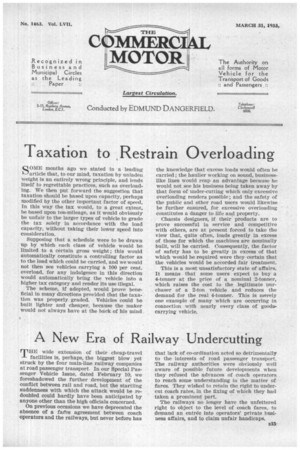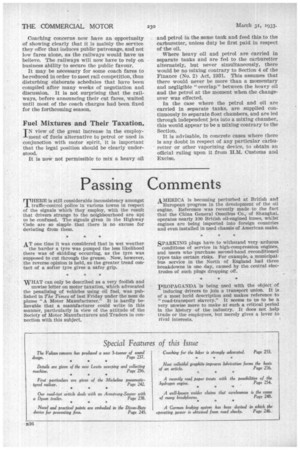A New Era of Railway Undercutting T HE wide extension of
Page 29

Page 30

If you've noticed an error in this article please click here to report it so we can fix it.
their cheap-travel facilities is, perhaps, the biggest blow yet struck by the four main-line railway companies at road passenger transport. In our Special Passenger Vehicle Issue, dated February 10, we foreshadowed the further development of the conflict between rail and road, but the startling suddenness with which the attack would be redoubled could hardly have been anticipated by anyone other than the high officials concerned.
On previous occasions we have deprecated the absence of a faties agreement between coach operators and the railways, but never before has that lack of co-ordination acted so detrimentally to the interests of road passenger transport. The railway authorities were obviously well aware of possible future developments when they refused the advances of coach operators to reach some understanding in the matter of fares. They wished to retain the right to undercut coach rates, in the fixing of which they had taken a prominent part.
The railways no longer have the unfettered right to object to the level of coach fares, to demand an entrée into operators' private business affairs, and to claim unfair handicaps. Coaching concerns now have an opportunity of showing clearly that it is mainly the service they offer that Induces public patronage, and not low fares alone, as the railways would have us believe. The railways will now have to rely on business ability to secure the public favour.
It may be necessary for some coach fares to be reduced in order to meet rail competition, thus disturbing elaborate schedules that have been compiled after many weeks of negotiation and discussion. It is not surprising that the railways, before announcing their cut fares, waited until most of the coach charges had been fixed for the forthcoming season.
Fuel Mixtures and Their Taxation.
IN view of the great increase in the employment of fuels alternative to petrol or used in conjunction with motor spirit, it is important that the legal position should be clearly understood.
It is now not permissible to mix a heavy oil and petrol in the same tank and feed this to the carburetter, unless duty be first paid in respect of the oil.
Where heavy oil and petrol are carried in separate tanks and are fed to the carburetter alternately, but never simultaneously, there would be no mixing contrary to Section 4 of the Finance (No. 2) Act, 1931. This assumes that there would never be more than a momentary and negligible "overlap" between the heavy oil and the petrol at the moment when the changeover was effected.
In the case where the petrol and oil are carried in separate tanks, are supplied continuously to separate float chambers, and are led through independent jets into a mixing chamber, this would appear to be a mixing contrary to the Section.
It is advisable, in concrete cases where there is any doubt in respect of any particular carburetter or other vaporizing device, to obtain an official ruling upon it from H.M. Customs and Excise.




























































































